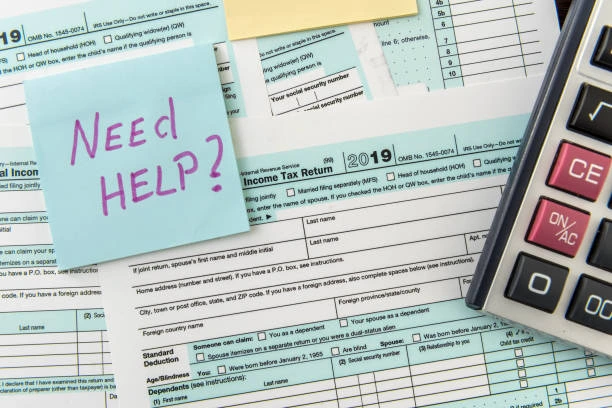The Ultimate Guide To Foster Care Adoption Tax Credit

If you are a foster care parent and you are looking for financial assistance, then the foster care adoption tax credit can be of great help. This guide is to help you know what this tax credit is all about and how to lay your hands on the credit.
How this guide will help you.
There are sundry expenses associated with the whole adoption process done through foster care, which includes legal expenses, travel costs, and agency fees. The foster adoption tax credit will help you reduce the financial load to the nearest minimum.
Going through the guide will give you knowledge on how to claim the foster care adoption tax credit so you can concentrate on building that loving home for your child without any financial pressure, which is sometimes unbearable. Understanding what you will save by getting this credit will make your adoption journey more reasonable and stress-free.
The truth is, not all foster parents are aware of ways in which they can be eligible to enjoy this foster care adoption tax credit. We have discussed who qualifies for the tax, how income or certain expenses apply, and what type of document you will need.
This is important because, through an understanding of qualification, you would avoid the common pitfalls that ensure in every possible way you have met the qualification needs to claim the credit. Better yet, it saves you the headache that comes later when filing your taxes.
What Is Foster Care Adoption Tax Credit?
The Federal Foster Care Adoption Tax Credit helps defray some of the costs associated with the adoption of a child through state foster care. Parents who adopt may then claim the credit on qualified adoption expenses, including attorney fees and court costs, travel, lodging, and other expenses. It is supposed to incentivize the adoption of children since it reduces the spending.
This can be especially helpful in foster care adoptions because many foster care children come with “special needs.” If your adopted child qualifies as having special needs, then you do not have to itemize your adoption expenses in order to take the full amount of the credit. In 2024, you can claim up to $15,950 per child.
This is a nonrefundable credit; hence, it may reduce one’s taxes to zero but will not provide a refund of more than that. The part of the credit not used may be carried forward for five years. This credit enables families adopting out of foster care to make the adoption process cheaper.
The Foster Care Adoption Tax Credit is significant as offsetting the costs of adoption, and all are well worth learning about.
Who Is Eligible For Foster Care Adoption Credit?
Adoptive parents must meet some general requirements that encompass the process of their adoption and their personal finances for them to qualify for the Foster Care Adoption Tax Credit. The tax credit allows for qualified adoption expenses, thus reducing the cost burden on a family that has adopted a child from foster care.
Key Eligibility Criteria:
- Adopting a Child from Foster Care: A child must be adopted from U.S. foster care. Generally, children with special needs will qualify for the full tax credit no matter your expenses.
- Qualified Adoption Expenses: Qualified adoption expenses for foster parents include attorney fees, court costs, and adoption agency fees. In contrast to those situations, if the child is considered to have special needs, the full credit can be obtained where such expenses are minimal, or the state completely/partially reimburses such expenses.It affects the adopting family’s ability to claim the full adoption tax credit. That means, for tax year 2024, the credit would begin to phase out at $239,230 for a family when its MAGIs exceed that amount and fully phase out once the MAGI exceeds $279,230.
- Affect the degree to which the full tax credit for adoption can be claimed by the adopting family. That means, for tax year 2024, the credit would begin to phase out at $239,230 for a family when its MAGIs exceed that amount and fully phase out once the MAGI exceeds $279,230.
- Finalized: The adoption must be finalized in order to take the credit. Parents cannot claim the credit in any year before the year when the adoption is finalized.
How Foster Care Adoption Credit Will Reduce Your Tax Liability:
The Foster Care Adoption Tax Credit provides motivation for adoptive parents to seek placement through the foster care system with the hope that they may incur only part, and not all, of the costs associated with that route. By reducing the taxable amount owed to the government, it helps ease the adoption-related financial burden.
How the Foster Care Adoption Credit Works:
It is a nonrefundable credit, meaning literally that it offsets a tax liability dollar for dollar—but only to the extent of tax liability. What this means, for instance, is that if one owed $3,000 in taxes and one qualified for a $5,000 adoption credit, then one’s tax bill will zero out, but that doesn’t mean that you just made $2,000 with this deal.
The only silver lining in this regard is that the unused credit can be carried forward up to five consecutive years. In other words, foster parents who paid little or no taxes for a given year would still be able to get the credit in the following years.
Example of Benefits:
Example: If you are a foster parent and you have adopted a child, and you paid $8,000 worth of qualifying adoption expenses, the credit is able to reduce your tax liability for that year to $2,000. The balance of $6,000 can then be carried forward to future tax years, whereby you would be able to benefit from the use of the credit over more than one year.
This carryforward can be extremely valuable for foster parents with little or no tax liability. For example, if you are going to pay only $500 in taxes for the current year but are entitled to a $5,000 credit, the $4,500 remaining will be allowed to apply over the next five years until you fully take advantage of the credit.
Common Challenges You May Face When Trying To Get Foster Care Adoption Tax Credit:
More often than not, at each step of fostering, the foster carer faces many issues. There could be emotional, practical, or even legal-system complications. One must find out what the issues are and how best to resolve them for the smooth transition to a stable, loving atmosphere.
1. Emotional Stress:
With fostering, many times, emotional stress is there because foster parents get attached to a child who might have suffered trauma, neglect, or abuse. Sometimes such children can be problematic in their behaviors due to their background and stress the foster parents.
Professional help through therapy and counseling can provide coping mechanisms to the foster parents. They could also join support groups for other foster families, compare notes, learn from, and feel they are in this together.
2. Navigating the Legal Process:
The legal steps following the foster care are quite overwhelming to new foster parents. Maybe it is how to navigate court proceedings, understanding the legal rights, or doing paperwork.
Solution: Engaging an experienced attorney who specializes in foster care can ease some of the burden and responsibility. Most agencies dealing with foster care also provide free legal advice or step-by-step guidebooks for parents. Informing oneself about state laws and keeping a solid record may also help.
3. Uncertainty of the outcome:
There is so much emotional uncertainty regarding reunification with biological parents or placements with other family members. Foster parents, in some cases, may also fear just how emotionally exhausting the experience will be for themselves and the child.
Although this might never clear the air and take this uncertainty away, at least communication with the caseworkers will clarify matters. But more importantly, is living in the present and giving a secure, loving home to the child, whatever the outcome.
4. Financial Burden:
While most are given a stipend for being foster parents, the cost of raising one child can be very expensive; a child often has medical and sometimes emotional needs. Solution: This can be a relief when researching other avenues of financial support, such as foster care adoption tax credits or programs in each state that exist.
One can also work with nonprofits offering foster kids clothing, school supplies, and medical support while being a foster parent. Only by meeting such common challenges and availing themselves of the support available to them can foster parents provide an environment that will allow personal development and emotional stability for the children in their care.
Why Do You Need Foster Care Adoption Tax Credit?
The adoption tax credit is a bit in need of careful planning and attention to detail to ensure full benefit goes to the adoptive parents. Here are a few quick tips for maximizing the credit parents can take advantage of to offset some of that cost.
1. Understand the eligibility criteria:
However, before one claims the Adoption Tax Credit, it is important to understand eligibility. The credit includes qualified adoption expenses, such as adoption fees, court costs, attorney fees, and travel expenses.
Parents adopting through foster care, domestically, or internationally through agencies are eligible for this credit; however, there may be various rules applied in regard to international adoptions. Only adoptions completed within the year are considered eligible, while domestic adoptions are qualified even if they are not finalized.
2. Take the credit up to maximum:
For 2024, the maximum credit amount is $15,950 per child, so ensure that qualified expenses are documented to help you claim at least such. If adopting more than one child, remember this is a credit per child, and therefore adoptive parents can claim the entire amount for each child who qualifies.
3. Understand Income Limitations:
The foster care adoption Tax Credit can be reduced due to income limitations. The credit begins to phase out for 2024 when families have modified adjusted gross income over $239,230 and is completely phased out at $279,230 of MAGI. If this is your income or below that range, you get reduced or no credit. You may want to consider some tax strategies that keep your MAGI as low as possible for the biggest credit.
4. Utilize the Carry-Forward Provisions:
If your liability for the year of adoption is less than your available credit, you can carry the unused credit forward for up to five years. For example, if you have qualified adoption expenses that come out to a full $15,950 credit but you pay only $10,000 worth of taxes, you get to take the remaining $5,950 credit on future taxes. Record it and keep track of just how much credit you have remaining to carry forward in subsequent years.
5. Maintain proper recording:
You are thus assured that your claim will be passed through to the IRS. Records can include agency and attorney fees, travel expenses, and other home study expenses. If a domestic adoption is unsuccessful, you are still allowed to claim credit based on qualified expenses in the process of adoption.
This, even as much as could be said, is important even at that time.
6. Consult a Tax Advisor:
The Adoption Tax Credit is an adoption credit that is somewhat complex in nature, with its set income limits and carry-forward provisions.
This tax professional will go the extra mile to make sure you get the maximum amount of credit allowed without mistakes that would delay your refund. Adoptive parents can take advantage of the entire Foster Care adoption Tax Credit, including eligibility requirements and income limits, potential carry-forward provisions, and proper documentation. This is in a way so much financial burden from the adoption process will be taken away.
Conclusion:
Or, in other words, it is assistance from government to adoptive parents for much of the expense burden occurring during adoption: attorney fees, travel expenses, agency fees – this tax credit may enable the whole process to be done much more economically than what is available at present, particularly in the adoption of children with special needs.
It, therefore, provides for eligibility criteria, income limitations, and carry-forward provisions on maximization of such a credit over many years to bring down the tax liability.
Proper planning, documentation, and consultation with a tax advisor make realization of the full benefit from this credit possible; hence, it sets a less troubled path to adoption on your financials. While adoption of a child into a loving home may indeed hold financial benefits in the form of Foster Care Adoption Tax Credit, it may ease some of the accompanying financial pressures.




